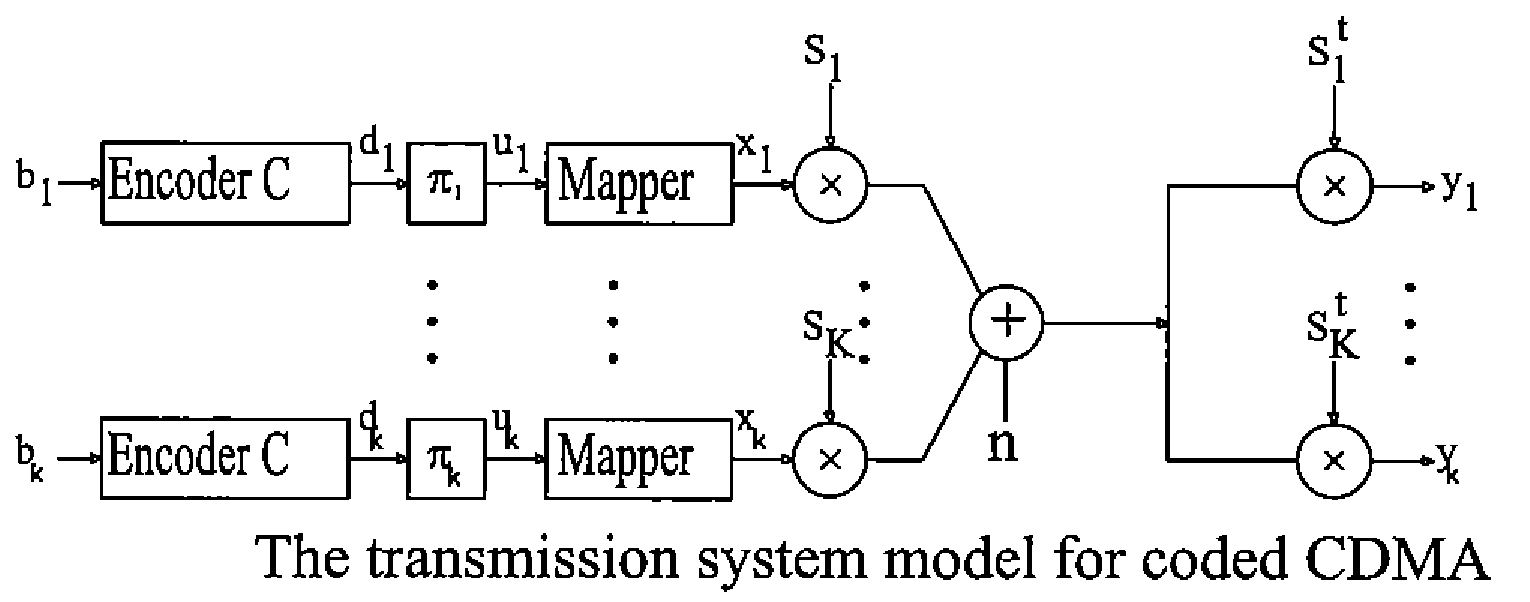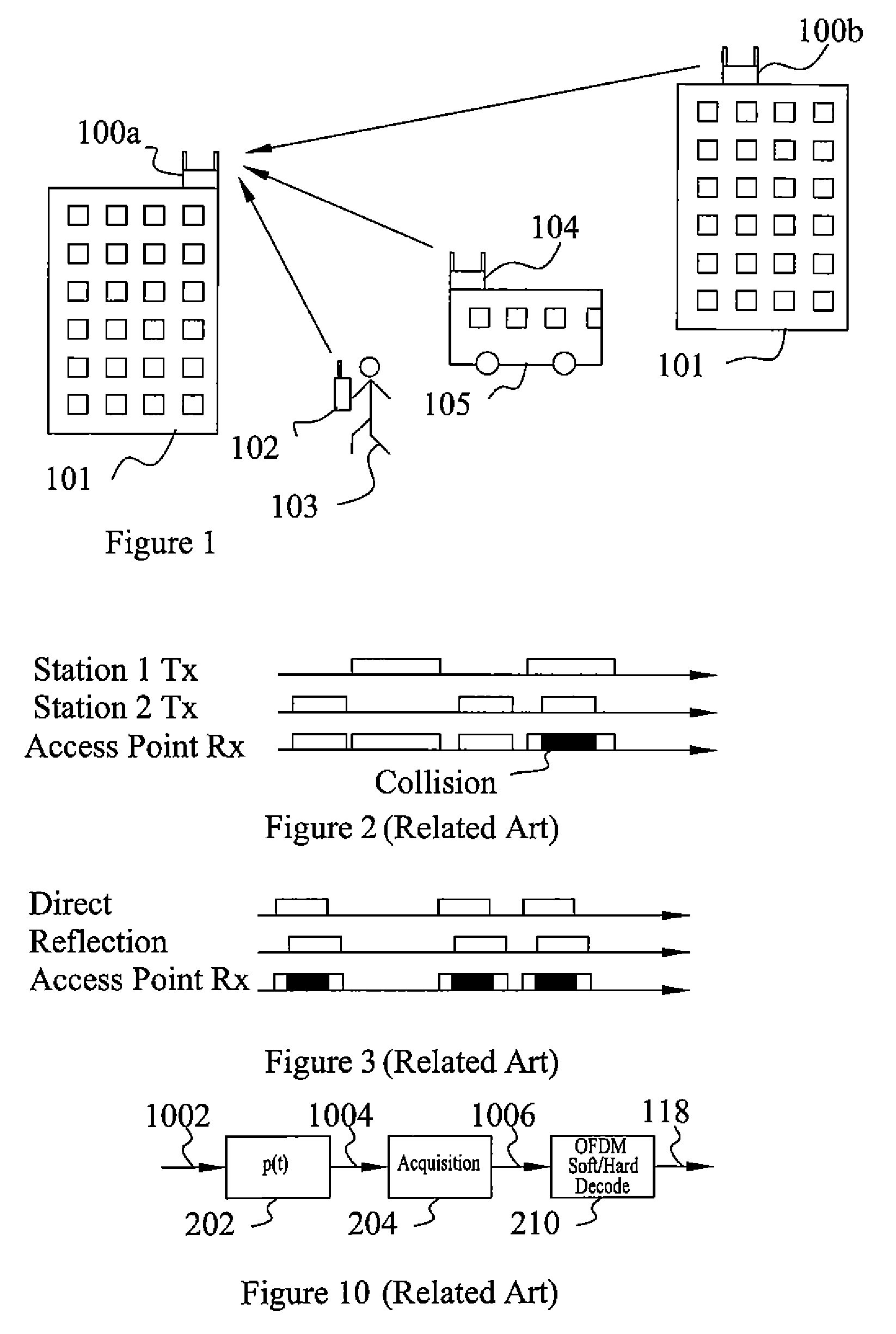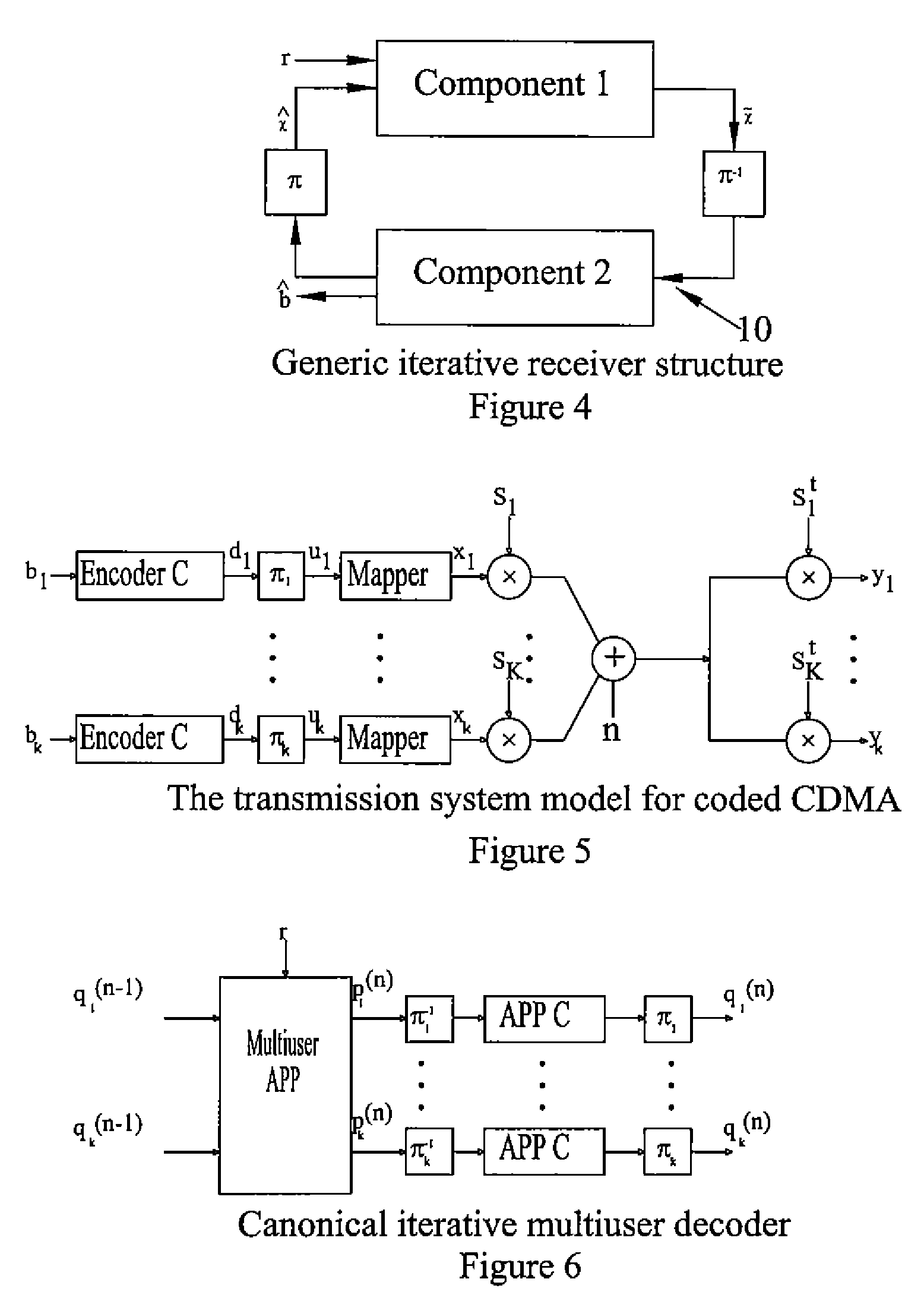Filter structure for iterative signal processing
a filter structure and iterative signal technology, applied in the field of wireless communication, can solve the problems of corrupt transmissions, limited performance quality in terms of how many users (capacity) can share resources simultaneously, interference between all active users,
- Summary
- Abstract
- Description
- Claims
- Application Information
AI Technical Summary
Benefits of technology
Problems solved by technology
Method used
Image
Examples
first embodiment
[0205]An innovation in the filter design of a first embodiment disclosed herein is to exploit the fact that information provided by the decoders is initially only marginally correlated over iterations, i.e. in the first few iterations, each iteration provides new information. As the structure converges, the output of the decoders also converges and eventually becomes completely correlated.
[0206]The disclosed filter design is based on a technique to use all available information from all previous iterations. This implies that the filter grows linearly in size by a factor equal to the number of users. This is clearly impractical. Thus, the disclosed filter design makes it possible to use all the available information through recursive feedback of the filter output over iterations, without requiring a growing filter. The size of the filter remains the same. In order to achieve this, the filters in the structure may be designed according to the recursive expressions derived herein.
[0207...
second embodiment
[0268]With reference to FIGS. 10 to 18 a second embodiment is described where there are a number of specific solutions offered which fall out from the general solution of (or realization that) adapting related art single pass OFDM receivers to iteratively receive signals at the sampling level allows the receiver to differentiate a desired packet from an observation of an interference (collision) signal at the receiver input. These solutions are as follows:[0269]An overall system solution—Iterative Receiver Structure itself.[0270]Additional solution aspect—Samples Estimates list.[0271]Additional solution aspect—Information Bit Estimates list.[0272]Additional solution aspect—Multiplexing of Time / Frequency Domain Channel Application Sample Estimates.
[0273]In one aspect, the second embodiment provides a system and method of receiving OFDM packets comprising the following:
[0274]a) sample a receiver input signal consisting of signals from one or more antenna;
[0275]b) add the input signal ...
third embodiment
[0386]With reference to FIGS. 19 to 23 a third embodiment is described which stems from the realization that reducing the distortions in one or more of the raw signals arriving at a receiver used to provide a decision statistic leads to an overall improvement in the decision statistic itself. Furthermore, appropriate selection of the means of reducing these distortions leads to a more reliable determination of packet arrival time.
[0387]In one aspect the third embodiment provides a method and apparatus for communicating in a multiple access communication network by synchronizing packets arriving at a receiver comprising:
[0388]receiving a packet input signal;
[0389]determining a correlation signal corresponding to the packet input signal;
[0390]processing the input and correlation signals such that at least one of the input signal and the correlation signal are filtered;
[0391]determining a decision statistic by combining a power component of the processed correlation signal with a power...
PUM
 Login to View More
Login to View More Abstract
Description
Claims
Application Information
 Login to View More
Login to View More - R&D
- Intellectual Property
- Life Sciences
- Materials
- Tech Scout
- Unparalleled Data Quality
- Higher Quality Content
- 60% Fewer Hallucinations
Browse by: Latest US Patents, China's latest patents, Technical Efficacy Thesaurus, Application Domain, Technology Topic, Popular Technical Reports.
© 2025 PatSnap. All rights reserved.Legal|Privacy policy|Modern Slavery Act Transparency Statement|Sitemap|About US| Contact US: help@patsnap.com



